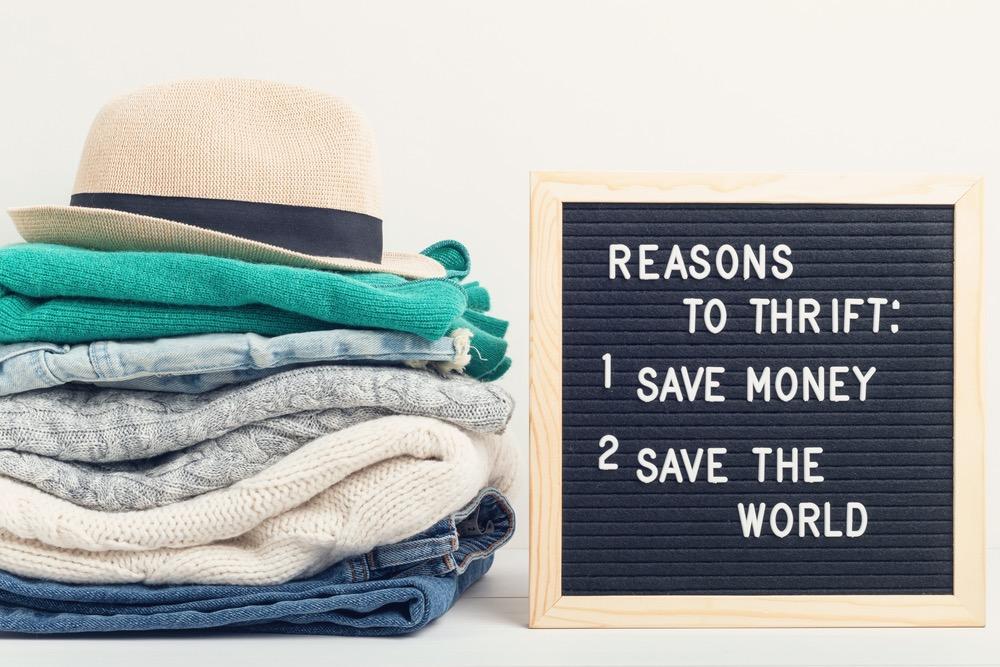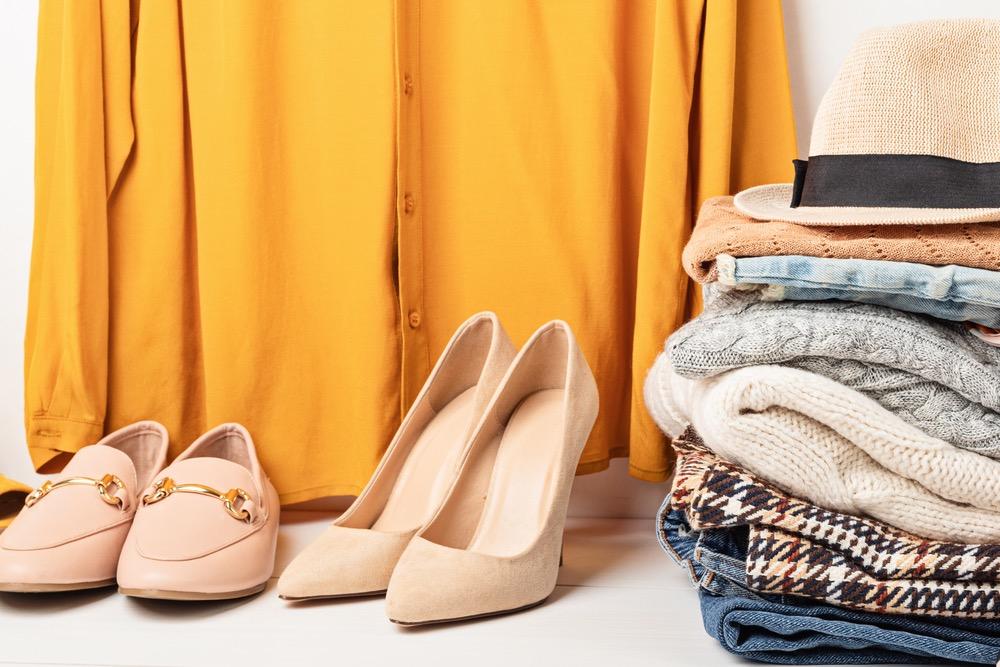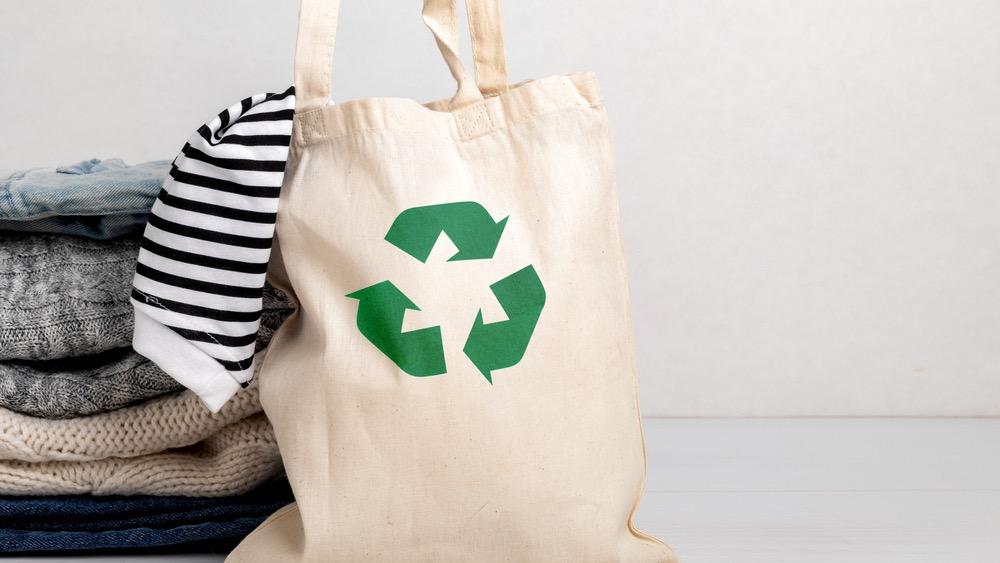Sustainable living means we prioritize the use of natural and renewable resources instead of creating excess waste and depleting environmental resources for future generations. And fashion (deservedly) gets a bad rap on the eco-front. According to Fashion Takes Action’s 2021 Feasibility Study of Textile Recycling in Canada, “textiles in Canada account for 7 percent of all plastics in Canadian landfills and make up the third-largest category of plastic waste in absolute numbers after packaging and automotive.” Further, 480,576 tonnes of textile waste end up in the waste stream every year!
The good news is that for those of us who want to have fun with how we dress, style adviser Afiya Francisco advises that there are a lot of things that we can do to turn the narrative around.

First, Afiya insists, “only buy what you truly love and what effortlessly complements what you already own. It’s one thing to love something, but you also need to know how and when you’ll wear it, to ensure that you maximize its usage.”
Consider renting your wardrobe, that’s right, borrowing a fabulous outfit … for a fee of course. Some rental places like The Fitzroy will outfit you for a single event like a gala, a prom or a wedding, saving you time and money and giving you access to a fabulous look you may not need to wear more than once. Other places like, Beyond the Runway, have monthly clothing subscriptions to outfit you for work and for play.
Invest in better-quality items that you will have for years. “Help your pieces to last longer by favouring natural fabrics, strong stitching, and taking good care of them by washing only when necessary and hanging them to dry,” says Afiya. Slow fashion trumps fast fashion.
It’s been widely documented that it takes 2,650 litres of water to make every t-shirt — that is about 900 days of drinking water for one person — and more than 6,800 litres for each pair of jeans. We have to remember that when an item is thrown away, it is not only the item itself going to waste, but also the natural resources required to create it.
Just one thrifted T-shirt can save 2,650 litres of water, more than you will drink in 2 years!
See 22 Ways to Conserve Water at Home.
Knowing this, makes it worth the effort to be creative and transform old clothes into new garments. For example, a dress you don’t wear can be turned into a top and skirt. Learn some new sewing skills so you can patch holes and sew buttons back on. Or if you have a bigger repair job, like zipper fixing, take to an alterations shop. In addition, buy your clothes at sustainable outlets that offer post-purchase repair services.
Visit local farmers’ markets, craft fairs and art shows to find artists who make new clothes from preloved items. (You will find many artisans on Etsy too.) Upcycled fashion involves turning old garments and textiles into new clothing or products of better quality and environmental value. It is an innovative and creative way for artisan designers to reduce the negative environmental impact caused by the fashion industry and when you support them, you are also ensuring that you have a one-of-a-kind piece of clothing or accessory to wear.
“Shopping consignment and vintage is a great way to find unique pieces and designer discounts while also serving to keep items in circulation (and out of the landfill) longer,” recommends Afiya. “While there is a consistent base of people (40 percent) who purchase pre-owned goods at least once every few months, 60 percent of North Americans are shopping thrift once a year or less,” states a recent report from Value Village.

When you donate unused items, it helps to fuel the circular second-hand clothing market. If you don’t use a product or wear a piece of clothing anymore, give your wardrobe away to someone you know would make use of it. It’s a good idea to take photos of items you no longer use and send them to friends asking if they have a use for them. Or perhaps consider organizing or participating in a clothing swap. Many community organizations run big swap events every year, and when you donate items, you receive credits to “shop” for items dropped off by others. It’s great fun and a smart way to meet like-minded people in your community.
Consider bringing clothing items to charity programs that support people who are unhoused, families living in shelters, new Canadians and other groups that would benefit from these items. First, check the organization’s website to see if they have posted a list of the most needed items and then be kind and be sure the items are clean and ready to wear right away.
Investigate clothing company return programs. Some brands like Patagonia, H&M, Levis and Nike will accept items for recycling but check their websites first as many programs have been put on hold due to Covid precautions.
Recycle clothing. While some municipalities in Canada have established textile diversion programs, most textiles are being collected by charities like Diabetes Canada that sell the material to local second-hand retailers to help fundraise their missions. However, based on the Ontario Dumpster Dive study, only 22 percent of all textiles in the waste stream are available for recycling — most of it is so contaminated that it ends up in landfills.
The second-hand materials that are not contaminated but cannot be sold are diverted to the global market and become fibreglass, insulation or industrial rags. This isn’t true recycling, but rather downcycling, but we’re happy it’s being kept from the landfills at least.
Sustainable living is a lifestyle, practice, and philosophy. The little changes you make today mean a lot for tomorrow, and from there, the sky’s the limit. Together, let’s adopt a more sustainable lifestyle.
Jennifer Reynolds, our previous Editor-in-Chief, is a long-time authority in gardening, do-it-yourself projects, urban sustainability, parenting, placemaking and community matters. Her features and columns have been published in Canadian Living, Canadian Family, Gardening Life, House & Home, Globe & Mail, National Post, Toronto Star & more. Plus, her designs and expertise have been featured on dozens of HGTV, W Network and CTV shows.













